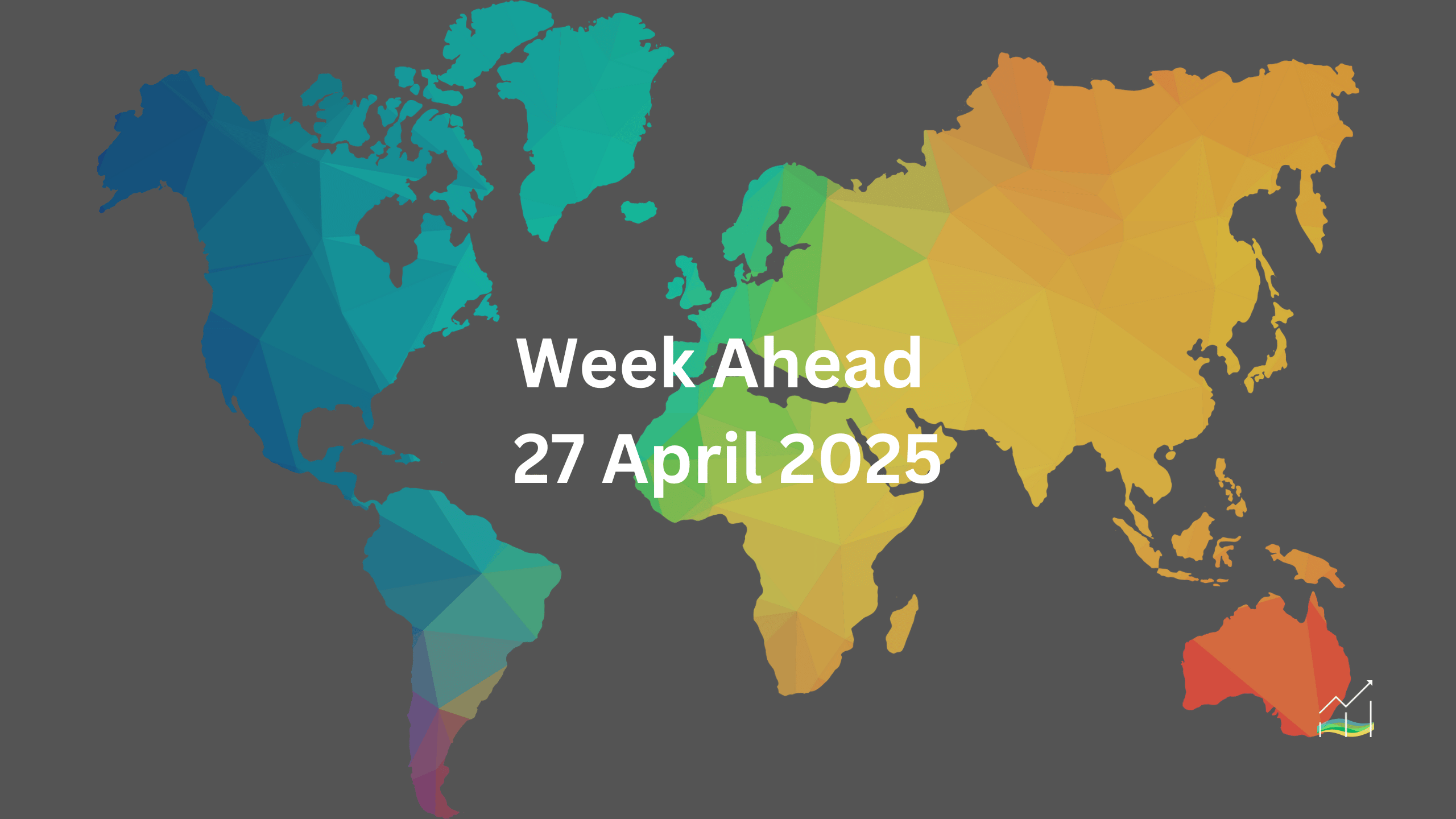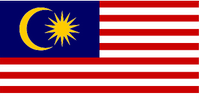27/04/2025 Week Ahead

Global Markets Reprice America
Key Takeaways:
- US economic leadership is eroding amid erratic policies and institutional strain.
- Global growth risks are rising as trade tensions and geopolitical instability spread.
- Dollar weakness reflects deeper concerns about American dependability.
- Central banks are preparing rate cuts; political risks around Fed independence remain elevated.
The global economy has entered a period of profound uncertainty, with the United States at the center of the disruption. Traditionally seen as a stabilising force, the US is now displaying erratic behaviour across economic and foreign policy arenas. The Trump administration’s “flood-the-zone” strategy—marked by rapid policy shifts, executive overreach, and attacks on multilateral institutions—is disorienting markets, allies, and domestic institutions alike. Blocking G7 condemnation of Russian aggression and escalating trade actions are further signs of a more unilateral and unpredictable US approach.
Warning signs within the US economy are becoming harder to ignore. A growing divergence between soft and hard data is emerging, with early signals of labor market strain visible in payroll tax trends. Tariff-driven distortions—such as accelerated purchases and inventory buildups—have temporarily boosted consumption metrics, but underlying demand risks fading once the artificial boost wanes.
Internationally, America's efforts to decouple from China are proving disruptive. China's domestic economy shows surprising resilience, supported by fiscal and monetary stimulus. Beijing’s diversification of exports and a weaker yuan versus the euro and yen further insulate it from US pressure. Meanwhile, America's aggressive stance is generating growing backlash among allies, including consumer boycotts and capital redirection into Europe.
Financial markets delivered a stark verdict in April: equities, bonds, and the dollar sold off sharply. While Trump’s team paused some tariff actions to soothe market fears, new investigations targeting key industries are already underway. Even the possible delay of auto tariffs appears more tactical than strategic.
Global central banks are adjusting policy in response. The UK, Australia, New Zealand, and Mexico are preparing cuts, while the Fed remains trapped between sticky inflation and growing political interference. President Trump's public criticism of Chair Powell and reported efforts to undermine the Fed raise the risk of a serious escalation, which could ignite renewed market volatility.
Congress is also starting to push back, with bipartisan resistance mounting against executive overreach on tariffs. Legal and legislative battles could become a major theme in the months ahead.
The dollar’s slide is more than a technical correction. It signals a deeper repricing of America’s global role and reliability. The postwar architecture of US-led stability is fraying, and markets are adjusting to a world where America is no longer the undisputed anchor.
United States of America
Overview
The US dollar has been in a broad bull market since the 2008 financial crisis, peaking in 2022 and largely ranging until its breakdown in April 2025. On the Federal Reserve’s broad trade-weighted nominal measure, the dollar peaked as recently as January, but signs are increasingly pointing to a major trend shift. We suspect a multi-year dollar downtrend is now underway.
More immediately, we are concerned that intensifying headwinds will push the Federal Reserve into resuming its rate-cutting cycle by June or July. Early evidence of economic weakening is accumulating: container shipments from China—taking roughly 30 to 45 days to reach key US markets—have slowed dramatically, signalling future weakness in trucking, warehousing, and retail inventories. Tourist flows from Europe and Canada are collapsing, likely to deliver a significant blow to the US hospitality sector. Although Chair Powell's remarks that "real sector data has yet to catch up with survey weakness" still resonate, we expect the hard data to begin deteriorating in the coming months, amplified by federal layoffs and immigration restrictions affecting the labour market.
China’s export controls on rare earths will further pressure US manufacturing, with many companies estimated to have only 2–3 months of inventory buffer. Meanwhile, popular narratives questioning the dollar’s reserve currency status are growing louder. While actual reserve shifts tend to move slowly and lag real-time developments, the trend of foreign and domestic investors rebalancing away from US assets appears well underway. The IMF’s quarterly reserve allocation report for Q1 will be released in June, with fuller evidence only arriving by September.
While it is easy to mistake cyclical weakness for structural change, the current rebalancing—accelerated by policy missteps and external pressures—marks a critical phase for the dollar and broader US economic positioning.
Economic Drivers
- Multi-year dollar bull cycle appears to have ended; downtrend likely underway.
- Fed expected to resume rate cuts by mid-2025 as real sector data weakens.
- Sharp slowdown in Chinese container shipments signals future economic pain.
- Hospitality, trucking, and warehousing sectors at risk from collapsing tourism and trade flows.
- Rebalancing away from USD and US assets underway among global investors.
Data and Events
- April 30 – Advance Estimate for Q1 GDP
- May 1 – Weekly Jobless Claims
- May 1 – ISM Manufacturing PMI (April)
Price Action
- Dollar Index broke lower after years of consolidation.
- Immediate technical support below 97.00; broader downside risks persist.
- Temporary rebounds likely, but structural bias has shifted bearish.
Key Points:
- Structural weaknesses and cyclical headwinds are converging on the US economy.
- Dollar weakness reflects more than liquidity—investors are reassessing systemic US risk.
- Export controls, immigration curbs, and federal layoffs will weigh on labour markets.
- Watch for Fed policy pivot as real economy deteriorates more visibly in Q2.
Australia
Overview
The Australian dollar has staged an impressive recovery, rebounding from a five-year low near $0.5915 after the postponement of the so-called reciprocal US tariffs and amid a broad sell-off in the US dollar. AUD/USD broke through its 200-day moving average for the first time since November and set a new 2025 high near $0.6470. A further move above the $0.6550 resistance zone could open the door for an advance toward $0.6700.
Domestically, Australia’s political landscape offers a rare point of stability. With federal elections scheduled for May 3, the ruling Labor Party continues to hold a steady lead, contrasting sharply with the anti-incumbent sentiment seen elsewhere globally last year. Political continuity in Canberra offers a modest positive backdrop at a time when global political risks remain elevated.
On the monetary policy front, the Reserve Bank of Australia meets on May 20. Markets have begun to toy with the possibility of a 50 basis point cut, but we suspect the RBA will proceed more cautiously, opting for a 25 basis point move initially. Regardless, swaps markets are now pricing in 100–125 basis points of easing over the course of the year.
Australia’s external position remains its key vulnerability. The Trump administration’s intensifying pressure on allies to curb economic ties with China places Australia in a particularly difficult position. Strategically tied to the US through security and intelligence alliances, Australia is also heavily dependent on China, its largest trading partner by a wide margin. As tensions between Washington and Beijing escalate, Australia faces an increasingly precarious balancing act.
Economic Drivers
- AUD recovery driven by USD weakness and delayed US tariff escalation.
- May 3 election seen as a source of political continuity; Labor holds strong lead.
- RBA expected to cut rates cautiously; markets lean toward aggressive easing.
- Geopolitical pressure mounts as Australia straddles US-China fault lines.
Data and Events
- May 3 – Federal Election
- May 20 – RBA Monetary Policy Meeting
Price Action
- AUD/USD broke through 200-day moving average; reached $0.6470 high.
- Key resistance at $0.6550; break higher targets $0.6700.
- Technical backdrop turning increasingly supportive amid USD weakness.
Key Points:
- Australian political stability stands out in a volatile global landscape.
- RBA likely to move cautiously on rate cuts despite aggressive market pricing.
- Australia's economic and strategic ties with China create ongoing risks.
- AUD strength remains vulnerable to shifts in US-China tensions.
Canada
Overview
Canada heads to the polls on April 28, and the political landscape has shifted dramatically under the pressure of US economic and political threats. The US administration’s aggressive posture has sparked a nationalist response within Canada, revitalising the Liberal Party under Mark Carney. Recent polling indicates that nearly two-thirds of Canadians now view the US as either a threat or an unfriendly nation—fueling consumer boycotts against US brands and a collapse in cross-border tourism bookings.
While front-loading of economic activity ahead of US tariffs likely supported Canadian growth in Q1, the outlook for Q2 and Q3 has darkened considerably. The external headwinds are powerful, and domestic sentiment remains fragile. Should Carney secure a mandate, he is expected to introduce fiscal support measures to cushion the blow. Canada has room to maneuver, with a manageable budget deficit of around 2% of GDP recorded in 2024.
The Bank of Canada next meets on June 4. Swaps markets currently price in roughly a 45% chance of a rate cut, but we subjectively believe the risk is higher given deteriorating trade conditions, domestic demand weakness, and broader global fragility.
In FX markets, the Canadian dollar remains firm, trading near six-month highs against the US dollar. USD/CAD has fallen nearly 7% from its February peak. A decisive break below the CAD1.3700 level would open a potential move toward CAD1.3400 in the weeks ahead.
Economic Drivers
- US pressure and trade threats reshaping Canadian political dynamics.
- Liberal Party resurgence under Mark Carney driven by nationalist sentiment.
- Sharp falloff in tourism and US brand consumption to weigh heavily on growth.
- Fiscal support likely after the election; monetary easing risk rising.
Data and Events
- April 28 – Federal Election
- June 4 – Bank of Canada Policy Decision
Price Action
- USD/CAD trading near six-month lows; down nearly 7% from February highs.
- Break of CAD1.3700 support could trigger move toward CAD1.3400.
- Canadian dollar buoyed by domestic political shift and broad USD weakness.
Key Points:
- Canadian economy faces growing external headwinds despite early Q1 resilience.
- Political shift signals stronger fiscal response ahead.
- Risk of Bank of Canada rate cut higher than markets currently price.
- Canadian dollar strength fragile; heavily dependent on domestic policy follow-through.
China
Overview
China’s direct export exposure to the US has declined significantly over the years, with exports now accounting for around 2.3%–2.5% of China's GDP. However, the imposition of sweeping tariffs, combined with Beijing’s move to curb purchases of key US goods such as airplanes, autos, LNG, oil, beef, and soybeans, threatens to sever large portions of the direct trade relationship. Indirect effects are also mounting, as the US’s blanket 10% tariff impacts offshore production hubs tied to Chinese supply chains. These trade disruptions present a considerable headwind for the Chinese economy, already struggling to stabilise its property sector.
While speculation persists that Beijing may engineer a major yuan devaluation to blunt the impact of tariffs, such a move would risk significant market destabilisation. Instead, the People's Bank of China has opted for a more subtle shift—allowing greater daily fluctuations in the USD/CNY reference rate than earlier this year. Though the yuan is little changed against the dollar year-to-date, the broader weakening of the greenback has meant notable yuan depreciation against the euro, the yen, and many emerging market currencies.
Beijing faces a delicate balancing act. A sharp devaluation would invite broader protectionist retaliation, further complicating trade relations. More likely, authorities will continue to lean on domestic stimulus—both fiscal and monetary—to offset external pressures. The PBOC appears committed to maintaining broad stability in the yuan’s value against the US dollar, neither aggressively weakening nor strengthening it, despite external volatility.
Economic Drivers
- Direct exports to US only modest portion of GDP but broader trade shock intensifying.
- Tariffs affecting both direct exports and offshore production hubs tied to China.
- PBOC allows for greater flexibility in daily CNY fixings, avoiding destabilising moves.
- Fiscal and monetary stimulus expected to support domestic demand in coming months.
Data and Events
- April 29 – Official Manufacturing and Non-Manufacturing PMIs (April)
- May 3 – Caixin Manufacturing PMI (April)
Price Action
- CNY stable against USD, but weaker against EUR, JPY, and EM currencies.
- Broader yuan depreciation reflecting external pressures, not aggressive policy action.
- PBOC maintaining a steady approach; avoiding major FX disruptions.
Key Points:
- China avoiding major devaluation strategy, preferring controlled exchange rate flexibility.
- Trade headwinds growing, but authorities pivoting toward domestic stimulus.
- Risk of secondary protectionist measures if export deflection not managed carefully.
- Yuan stability policy underscores Beijing’s focus on internal economic resilience.
Europe
Overview
Sentiment toward Europe reached a low point earlier this year. Coming out of the World Economic Forum in Davos, Europe was widely labeled as "uninvestable," a view that mirrored domestic sentiment across much of the continent in 2024. Record flows into US equities by European investors appear to have marked a cyclical extreme. Yet despite the lingering pessimism, the eurozone economy continues to struggle under the weight of weak demand and geopolitical headwinds.
The preliminary April composite PMI fell to 50.1, a four-month low and just barely above contraction territory. While some fiscal support is anticipated, the primary burden of stabilising the economy continues to fall on monetary policy. The European Central Bank has already cut rates by 75 basis points in 2025 following a 100 basis point reduction in 2024. Markets are pricing in another 25 basis point cut at the ECB’s early June meeting.
Additional macro developments are also weighing on price pressures. Since the last economic update in March, the euro has appreciated by nearly 6%, and Brent crude prices have fallen by around 5%. The IMF recently downgraded its eurozone growth forecast to 0.8% for this year, down from 1.2% previously. Markets expect the ECB to push the deposit rate below 1.75%—the lower end of the estimated neutral range—by Q4, with the terminal rate in 2026 seen around 1.25%.
Notably, the euro rallied nearly 5% in April, positioning it for a fourth consecutive monthly gain and the strongest monthly performance since 2022. This rally has occurred even as interest rate differentials between the US and eurozone have remained wide. Rather than signaling an "emerging market" crisis in the US, as some have claimed, the euro's strength reflects a repricing of political and institutional risk in the United States. Simply put, investors are now demanding a higher premium to hold US assets.
Economic Drivers
- Composite PMI slipped to 50.1 in April; fiscal support remains limited.
- ECB has cut rates by 75 bps this year; another 25 bps cut priced in for June.
- Euro appreciation and falling oil prices likely to dampen inflation pressures.
- IMF downgraded 2025 growth forecast to 0.8%, down from 1.2%.
Data and Events
- April 29 – Final April Consumer Confidence
- May 2 – Final April Manufacturing PMI
Price Action
- Euro up nearly 5% in April; strongest rally since 2022.
- EUR/USD resilience despite wide US–eurozone rate differentials.
- Key technical support levels shifting higher alongside broader USD weakness.
Key Points:
- Euro strength reflects global repricing of US political and institutional risk.
- ECB expected to continue easing into weaker growth backdrop.
- Stronger euro and softer energy prices point to slowing inflation momentum.
- Europe remains fundamentally weak, but shifting capital flows support the euro.
Japan
Overview
Japan appears increasingly unsettled by the Trump administration’s policies. Feeling diplomatically and economically threatened, Tokyo is taking steps to recalibrate its external relationships—particularly seeking to reset economic ties with China and resolve outstanding disputes. Domestically, the minority LDP government, facing low public support, is preparing additional measures to shore up the economy through expanded loan programs and initiatives to boost domestic demand.
Market expectations for Bank of Japan tightening have diminished markedly. At the end of March, swaps priced in roughly 30 basis points of hikes for this year; now, only about 18 basis points are discounted. The Bank of Japan’s next meeting concludes on May 1, where it is widely expected to downgrade both growth and inflation forecasts for 2025 and 2026. The IMF recently cut its Japan growth forecast to 0.6%, down sharply from 1.1%, mirroring concerns at the BOJ.
Meanwhile, the stronger yen—up roughly 11.5% year-to-date—and a near 10% decline in oil prices are expected to drag inflation lower. The BOJ’s current forecasts of 2.7% core CPI for this year and 2.4% for next year will likely be revised down. Interestingly, while US media focuses on stagflation risks domestically, Japan may be facing an even sharper version: weaker growth combined with persistent inflation, a far more entrenched version of stagflation than what the US currently faces.
Adding to the complexity, the traditional correlation between the yen and US 10-year yields has weakened. This decoupling likely reflects broader risk reassessment around US assets, where investors now require a higher premium to hold dollars amid escalating US political and economic instability.
Economic Drivers
- Tokyo unsettled by US policy shifts; resetting ties with China to manage risks.
- LDP government moving to stimulate domestic demand amid weak public support.
- BOJ expected to cut growth and inflation forecasts at May 1 meeting.
- Stronger yen and falling oil prices amplifying disinflation pressures.
Data and Events
- May 1 – Bank of Japan Monetary Policy Decision
- May 1 – BOJ Outlook Report on Economic Activity and Prices
Price Action
- Yen has appreciated ~11.5% year-to-date, reducing inflationary pressures.
- Correlation between USD/JPY and US 10-year yields loosening.
- USD/JPY remains vulnerable to renewed dollar weakness and broader risk shifts.
Key Points:
- Japan faces weaker growth and stickier inflation than the US—a true stagflation risk.
- BOJ likely to remain cautious; cuts to forecasts will reinforce dovish stance.
- Traditional yield-driven FX dynamics shifting due to broader US risk reassessment.
- Domestic stimulus and geopolitical recalibration key themes for Japan in H2.
United Kingdom
Overview
Sterling posted a historic run in April, staging a 10-day consecutive advance—the longest winning streak in at least 40 years, matched only four other times. Yet despite the duration, the magnitude of sterling's gain was relatively modest. With a roughly 3.0% appreciation, the pound outperformed only the Australian dollar and Norwegian krone among G10 currencies during the month, highlighting how much broader dollar weakness, rather than intrinsic sterling strength, defined the move.
Fundamentally, the UK economy found firmer ground in early 2025 after stagnating through the second half of last year. GDP growth is estimated around a 2% annualised pace in Q1, placing it among the best performers within the G7. However, external risks remain high. The IMF recently downgraded its 2025 UK growth forecast to 1.1% from 1.6%, citing widespread disruption from the US-driven surge in global trade barriers.
Inflation pressures have picked up temporarily, with the IMF raising its UK inflation forecast to 3.1% from 2.5% in 2024. Nevertheless, markets and policymakers expect this to be transitory. The Bank of England is still projected to deliver three rate cuts this year, with swaps markets now assigning a roughly 75% probability of a fourth cut before year-end.
Domestically, attention turns to local elections scheduled for May 1. Polls show Labour, the Conservatives, and the Reform Party running neck-and-neck, while the Liberal Democrats aim to capitalise on Tory vulnerabilities. The Conservatives have the most to lose after benefitting from Boris Johnson’s coattails during the last local elections in 2021.
Economic Drivers
- Sterling's 10-day winning streak historic in length, modest in scale.
- UK economy rebounded strongly in Q1, but external risks remain elevated.
- IMF slashed growth forecasts; sees inflation rise as temporary.
- BoE expected to deliver at least three rate cuts in 2025; fourth cut probability rising.
Data and Events
- May 1 – Local Elections
- May 2 – Final April Manufacturing PMI
- May 3 – Bank of England Monetary Policy Meeting Preview Period Begins
Price Action
- GBP up ~3% in April; lagged most G10 peers despite historic streak.
- Technical support at 1.3200; resistance remains near 1.3435.
- GBP dynamics still heavily influenced by broader USD sentiment.
Key Points:
- Sterling’s strength in April was more about dollar weakness than domestic fundamentals.
- UK growth surprise in Q1 contrasts with weak global backdrop.
- Political uncertainty around local elections adds short-term volatility risk.
- BoE easing cycle firmly priced in; inflation rise seen as temporary blip.
© 2025 SKONE Enterprise (003319453-V). All rights reserved.
The content on this site is for informational purposes only and does not constitute financial advice.


